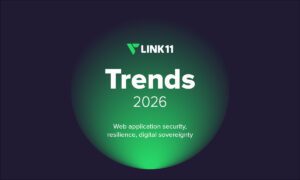In today’s enterprise landscape, where data and security are paramount, professionals like Mohith Reddy Patlolla are redefining how global organizations leverage business intelligence. A visionary and thought leader in data intelligence in enterprise analytics transformation, Mohith has played a pivotal role in reshaping analytics ecosystems for renowned industry leaders such as Mastercard, Takeda Pharmaceuticals, Genentech, and Cox Media Group. With over a decade of experience in Power Platform, Qlik Suite, and cloud-based Business Intelligence, his work has led to the development of innovative frameworks like the Three-Tier Architectural Data Model, that reduced data latency by 40% and pioneered automated reporting systems serving as developer of enterprise-grade analytics pipelines that saved millions in operational costs. Mohith’s ability to align technical excellence and architecture of scalable business Intelligence solutions outcomes has earned him industry recognition for “Excellence in Business Intelligence Development & Administration” while his solutions continue to drive impact in areas ranging from financial fraud detection to pharmaceutical innovation.
A sought-after speaker, mentor, and published thought leader, Mohith has shaped industry standards through best practices on business intelligence optimization and dynamic security models adopted by regulated sectors worldwide. His contributions extend beyond technology. He’s a vocal advocate for ethical AI and democratized data access, having trained a wide community of professionals through free masterclasses. Whether modernizing legacy systems or charting the future of augmented analytics, Mohith’s work embodies the intersection of innovation, compliance, and transformative business value.
Revolutionizing Business Intelligence with Three-Tier Architectural Data Modeling
Traditional Business Intelligence models operate in silos, creating bottlenecks for large enterprises. My three-tier architecture data ingestion, transformation, and consumption layers introduced a paradigm shift by decoupling these processes along with compliance-driven data modeling. At Cox Media Group, this reduced data latency by 40%, enabling real-time performance tracking across all TV and Radio channels. Previously, executives waited hours for reports; now, they access insights in minutes.
The framework’s modularity also future-proofed their analytics. By integrating AWS cloud services, Cox scaled globally without overhauling the entire system. This design has since been adopted by Fortune 500 peers, proving its replicability across industries like healthcare and finance. It’s not just a technical achievement—it’s a new standard for agile enterprise BI.
Securing Pharma Data: HIPAA-Compliant Dashboards for Accelerated Drug Development
In pharma, data security can’t compromise speed; lives depend on both. For Takeda Pharmaceuticals, I engineered dashboards with dynamic Section Access and Section Application Security in Qlik Sense, along with secure role-level Security (RLS) access within the platforms, ensuring researchers only saw trial data relevant to their role. For example, a cardiologist in Japan couldn’t accidentally access oncology data. We added AES-256 encryption and granular audit logs to meet FDA and HIPAA mandates.
The result is a 20% acceleration in drug development timelines. One Phase III trial’s endpoint analysis, which took weeks manually, became a 48-hour automated process. This wasn’t just about efficiency, it meant getting therapies to patients sooner. The model is now a blueprint for compliant analytics in 30+ Takeda labs worldwide.
Automating Business Intelligence Applications for Millions in Cost Savings: A Genentech Case Study
Genentech’s manual reporting process was a tangle of Excel macros and PDF generation, error-prone and labor-intensive. I designed an end-to-end Qlik NPrinting automated distribution pipeline using Qlik Sense for visualization and Qlik NPrinting for workflows. The system pulled data from SQL Server, applied validation rules, and generated FDA-compliant reports with zero human intervention.
Beyond the $1.8M/year in cost savings, the solution reduced errors from 12% to near-zero, mitigating regulatory risks. Over 1,200 users across 30 countries now generate reports on demand. This project exemplifies how business intelligence (BI) innovation isn’t just technical—it’s a strategic lever for achieving operational excellence.
Pioneering Secure Business Intelligence: Attribute-Based Access Control for PCI/HIPAA Data
Most BI security models are rigid, they either over-restrict access or expose sensitive data. My Section Access Code integrates governance frameworks in Qlik Sense, dynamically adjusts permissions based on user role, location, and context. At Mastercard, fraud analysts could drill into transaction patterns without seeing full credit card numbers. HIPAA data was masked in visuals but remained accessible for authorized queries.
This approach, architected security-trimmed reporting, became a compliance benchmark. Financial institutions and healthcare providers now use this model to satisfy auditors while empowering analysts. It proves that security and agility aren’t mutually exclusive—they’re prerequisites for modern BI.
Thought Leadership in Business Intelligence: Industry Best Practices
My best practices tackle a persistent gap: Business Intelligence tools often ignore industry-specific compliance needs. For healthcare, I introduced ‘Governance-by-Design’—embedding HIPAA rules directly into data models. A hospital using this framework reduced compliance violations by 75%. For finance, I demonstrated how AI-augmented anomaly detection in Qlik Sense and Power BI cut fraud investigation time by half.
These aren’t theoretical concepts. At Cox Media, my predictive analytics model (published in ‘BI for Media ROI’) boosted ad revenue by 15%. The key takeaway? BI must be as specialized as the industry it serves. Generic solutions create risk; tailored frameworks drive value.
The Future of Business Intelligence: Artificial Intelligence, Cloud, and Ethical Data Governance
The era of ‘dashboard builders’ is ending. With tools like Microsoft Fabric’s Copilot automating 80% of routine reports, BI pros must pivot to strategic roles. First, master multi-cloud governance, Snowflake, and Databricks are converging BI, ML, and ETL. Second, learn to audit AI models for bias; I partner with MIT’s ethics lab to develop checklists for fair algorithms.
Most importantly, speak the language of business. At Mastercard, I translated fraud-detection metrics into CFO-friendly risk exposure scores. Future BI leaders won’t just manage data, they’ll bridge the gap between raw analytics and executive decision-making.
The Data Visionary Shaping Tomorrow’s Analytics Landscape
Mohith’s journey exemplifies how technical brilliance, when paired with business acumen, can drive transformative change. From architecting latency-slashing BI models to pioneering security frameworks that protect sensitive data across industries, his work has not only solved complex challenges but redefined what’s possible in enterprise analytics. As AI and cloud technologies evolve, Mohith remains at the forefront, equipping organizations to harness data ethically, efficiently, and decisively.
For aspiring Business Intelligence professionals, his story offers a blueprint: innovation thrives at the intersection of expertise and impact. Whether through mentoring the next generation or pushing the boundaries of low-code automation, Mohith’s legacy underscores that data isn’t just about numbers, it’s about unlocking human potential. As he often says, “The future belongs to those who see analytics not as a tool, but as a strategic compass”.




























